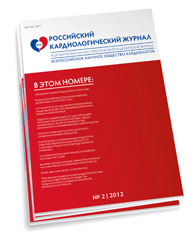Molecule Protects Against Heart Failure in Mice
Heart failure is a serious condition that affects more than 5 million people in the United States. It occurs when the heart can’t pump enough blood to meet the body’s needs. In some cases, the heart can’t fill with enough blood. In other cases, the heart doesn’t have enough force to pump blood to the rest of the body. The heart may respond in several ways, including increasing the size of heart cells to create more muscle mass and enlarging the heart chambers to pump more strongly.
Cells in stressed mouse hearts (bottom) become larger than those in unstressed hearts (top). Image by the researchers, courtesy of Nature.
Heart failure stems from diseases that damage or overwork the heart muscle, such as high blood pressure, coronary artery disease, and diabetes. The condition can cause trouble breathing, fatigue, and fluid buildup that results in swelling and weight gain. There’s no cure for heart failure, but medicines and lifestyle changes can help people who have the condition live longer and more active lives.
A team led by Dr. Ching-Pin Chang of Indiana University set out to better understand the molecular pathways involved in heart failure. The work was funded in part by NIH’s National Heart, Lung, and Blood Institute (NHLBI). Results appeared online on August 10, 2014, in Nature.
The researchers discovered a group of long non-coding RNAs specific to heart muscle. RNA is genetic material that typically functions as a template to make proteins. Some RNA, however, doesn’t code for proteins, and instead plays other important roles in the body. These particular RNA pieces came from a genetic region that normally codes for myosin heavy chain proteins, which are abundant in heart tissue. Thus, the team named them Myheart.
When the hearts of mice were stressed to induce heart failure, they became abnormally large and fibrous, and didn’t contract very well. Levels of Myheart decreased in these stressed hearts. The team used gene transfer technologies to restore levels of Myheart to normal in mice subjected to heart damage-inducing stress. The stressed hearts didn’t become as enlarged in the mice producing Myheart and had improved function, indicating that Myheart had a protective effect against heart failure.
Previous work by the team found that a protein called Brg1 is activated in stressed hearts. The team showed that Brg1 bound to DNA to inhibit production of Myheart, leading to heart damage. When Myheart was restored, it bound to Brg1 and prevented it from recognizing its DNA targets, thus protecting the heart from enlargement and failure.
“I think of Myheart as a molecular crowbar that pries BRG1 off the genomic DNA and prevents it from manipulating genetic activity,” Chang says.
Myheart is also repressed in stressed human hearts. While this study was done in mice, its findings could lead to new therapies for human disease. The team is now working to develop ways to chemically modify Myheart for potential delivery as a therapeutic drug.
Source: www.nih.gov






